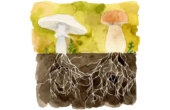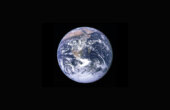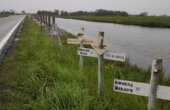Everything Is Wrong: Bernie Krause’s Concept of 'Biophony'
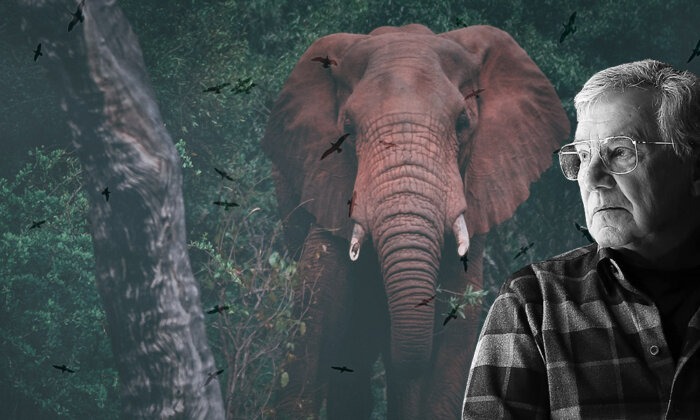
There was a time when Bernie Krause listened to the world like anyone else. He cherished the song of a robin in the park, trembled at the roar of a lion at the zoo and was overwhelmed by the awe-inspiring volume of a tree frog’s mating call. After experiencing an epiphany on his first wildlife recording session with headphones, however, Krause traded in an extremely successful career as an audio engineer, synthesizer specialist, and songwriter with renowned duo Beaver & Krause for a calling as a field recordist.
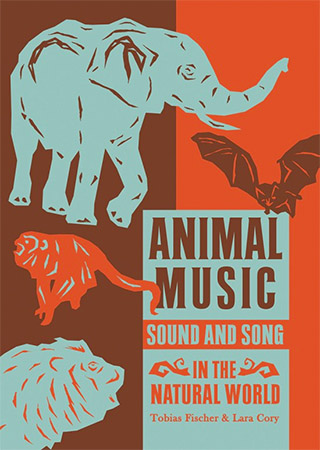
He set about committing the world around him to tape, eventually creating the perhaps most expansive private collection of animal sounds, today clocking in at 4,500 hours of material by 15,000 different species. It would take several years for Krause to realize that this catalog-approach was fundamentally flawed and only capable of reflecting a tiny fraction of the vast sea of sonic information contained within natural soundscapes. What he was doing, he realized, was “like taking apart a Beethoven symphony and just examining the strings lines or the horn line. And you listen to it and you say, ‘Well, that’s really nice.'” But it didn’t tell you what the piece was about. For the next decades, he would make it his life’s mission to uncover the meaning behind the sounds.
Decontextualization
Until the moment when he realized his mistake, the prevailing take on field recording was an approach he would later refer to as the “decontextualized single-species model.” Krause traces back the origins of this model to the achievements of Ludwig Koch, a German-born sound recorder who had escaped to England during the Second World War and accepted a position at the BBC, as well as a team of ornithologists from Cornell University. Their pioneering efforts in collecting the sounds of birds in Great Britain (Koch) and at a “gator-infested Georgia fen” (the Cornell team) would dominate public debate on the topic until the present day and define field recording as being about “the idea of life lists — finding and identifying single species of birds and mammals and, more recently, frogs and insects.”
Animals had to find ways of cutting through this wall of sound and they did this by claiming their own frequency in the sonic spectrum.
It would take until the early 1980s, when Krause was in Africa on a mission to record the audio part of an exhibition about a waterhole and the animal world gathered around it, before he started to feel otherwise. After setting up his gear, he was instantly struck by the richness and magnificence of the creature voices and decided to tape a far longer passage than he’d originally planned. Depleted by the hard work of the day, he had crept into his sleeping bag and was listening to the soundscape. It was then that he realized something seminal, as he recounts in his book, “The Great Animal Orchestra“:
It was in this semi-floating state — that transition between the blissful suspension of awareness and the depths of the total unconsciousness — that I first encountered the transparent weave of creature voices not only as a choir, but as a cohesive sonic event. No longer a cacophony, it became a partitioned collection of vocal organisms – a highly orchestrated acoustic arrangement of insects, spotted hyenas, eagle-owls, African wood-owls, elephants, tree hyrax, distant lions, and several knots of tree frogs and toads. Every distant voice seemed to fit within its own acoustic bandwidth – each one so carefully placed that it reminded me of Mozart’s elegantly structured Symphony no. 41 in C Major, K. 551.
Krause realized that the separation of animal song into individual voices did not present a sensible reflection of the world around us, because animals simply did not experience the world this way. Their acoustic habitat was marked instead by a deep, seemingly impenetrable constant togetherness of events, a simultaneity of myriads of different signals, the ebbing and swelling of sound from quiet moments into glorious, anthemic dawn and dusk choruses. Taking into account the importance of their calls for protecting their territory and attracting suitable mates, every lost emission was either a threat to their own life or the survival of their species. Which left only one possible conclusion for Krause: Animals had to find ways of cutting through this wall of sound and they did this by claiming their own frequency in the sonic spectrum.
And so, the lower ends are usually taken by mammals, from the subsonic utterances of giraffes, elephants and hippos to the sounds of monkeys and cats. Further up in the spectrum, one finds different species of birds, which have arguably taken the art of song to an unprecedented degree of refinement. The highest frequencies, finally, are secured by insects and the ultra-sonics of bats. Together, they form what Krause termed the “Great Animal Orchestra,” a constantly shapeshifting constellation of individual voices in motion, and he termed their symphonic soundscape a ‘biophony’ — all of the “sounds originating from nonhuman, nondomestic biological sources.” Krause’s thesis was instantly plausible and had far-reaching consequences not just for fellow musicians, but also in the realm of ecology. Which made field recording more political than it had ever been before.
Acoustic Evolution
Krause’s theory certainly had the advantage of not just presenting the most detailed explanation model for the acoustic environments surrounding us today, but actually offering potential insights into the evolution of species on the basis of sound. Before there was animal life on the planet, after all, the only noises were those springing from “nonbiological subcategories such as wind, water, earth movement, and rain.”
When life started to emerge in the giant oceans around 600 million years ago, the first organisms to populate this ‘geophony’ still had essentially unlimited bandwidth to choose from. Slowly but surely, however, things became more complicated: “At first, when their numbers were relatively small, acoustically sensitive organisms merely needed to filter out the geophonic background in order to perceive other sound-producing organisms within their habitats,” writes Krause. “As the number of species increased and became more complex, they had to be able to hear and process the particular sounds that were relevant to their well-being. Over the course of many glacial periods, especially the recent ones, the total number of creatures multiplied exponentially — species filling available biological niches. Complex habitats arose that supported robust varieties of lifeforms whose behavior and survival — both individually and collectively – were determined to a large extent not only by visual, olfactory, and tactile cues but by sound.” What we’re hearing when we’re listening to animal sounds, therefore, is anything but the spur of the moment, but the product of millions of years of adaptation and transformation, of individual changes within a huge sound body filled to the brim with information, in which every part is related in intricate ways.
What we’re hearing when we’re listening to animal sounds is anything but the spur of the moment, but the product of millions of years of adaptation and transformation.
If Krause is correct, then our ancestors were capable of extracting this information and using it to their advantage — either by using it as a sonic compass for navigation, for recognizing potential dangers (such as the proximity of predators or changing weather conditions) or by imitating animal calls as a bait or as a means of appeasement. As Krause puts it: “The ability to correctly interpret the cues inherent in the biophony was as central to our survival as the cues we received from our other senses.”
Our ancestors knew that the biophony of a particular location can tell us a great deal about factors such as which species populated the area, how many of them there were and where, roughly, they could be found. In short: It told them a lot about the health of that location. Some of the instincts from these times are still intact. Wildlife sound recordist Chris Watson has reported on the powerful sound of places in the Kielder Forest in Northumberland, where he would sense inexplicable, bad feelings about some of the places. And yet, only a few hundred meters away, he could set up his gear and feel perfectly happy. Intrigued by this phenomenon, Watson would ask guides on all of his trips around the globe whether they knew about similar places. Astoundingly, all of them did. The recurring pattern seemed to be that the ‘evil sounding’ spaces were those devoid of animal noises, while those full of life and sound tended to come across as far more agreeable.
The recurring pattern seemed to be that the ‘evil sounding’ spaces were those devoid of animal noises, while those full of life and sound tended to come across as far more agreeable.
For one of his projects, Krause gained permission to record at a forest management area called Lincoln Meadow in the Sierra Nevada mountains, both before and after a lumber company had performed so-called selective loggings. The result stunned him. In 1988, shortly before the company set to work, he recorded the biophony in the last hours of daylight. The outcome was a spectrogram with a remarkable density throughout all frequency bands, as could be expected for a habitat replete with the most diverse animal life. In 1989, he returned to the meadow after the operation had been completed for a second session under the exact same conditions and at the exact same time. In keeping with what had been promised by the logging company, the place still looked as though it was teeming with life — “I was delighted to see that little seemed to have changed,” as Krause remarked. Back in the studio and after a look at his spectrogram, he had to revise that impression: “Gone was the thriving density and diversity of birds. Gone, too, was the overall richness that had been present the year before. The only prominent sounds were the stream and hammering of a Williamson’s sapsucker.” The ear, then, turned out to be capable of detecting the true state of the habitat much more precisely and truthfully than the eye ever could.
Krause’s work has done a lot in terms of explaining why human acoustic presence — the anthrophony — can be harmful to habitats. The volume of passing cars can result in birds living close to a highway no longer being able to hear and locate each other and thus, in a decrease of their population. Likewise, low-flying planes can disrupt the synchronous calls of frogs or cicadas. Once that synchronicity has been broken, individual voices become audible, making them vulnerable to predator attacks. What’s more, it casts doubt on the so-called progress that has been made so far in trying to understand animal song. If that song is always the result of a far larger composition and integrated into a long development starting at the very earliest stages of life, then this strongly suggests our concept of producing sound is most likely closely integrated with that of all other species on the planet. And our analysis of animal sounds and song would never be complete without taking this into account.
Tobias Fischer is an co-author of “Animal Music: Sound and Song in the Natural World,” from which this article is excerpted.
